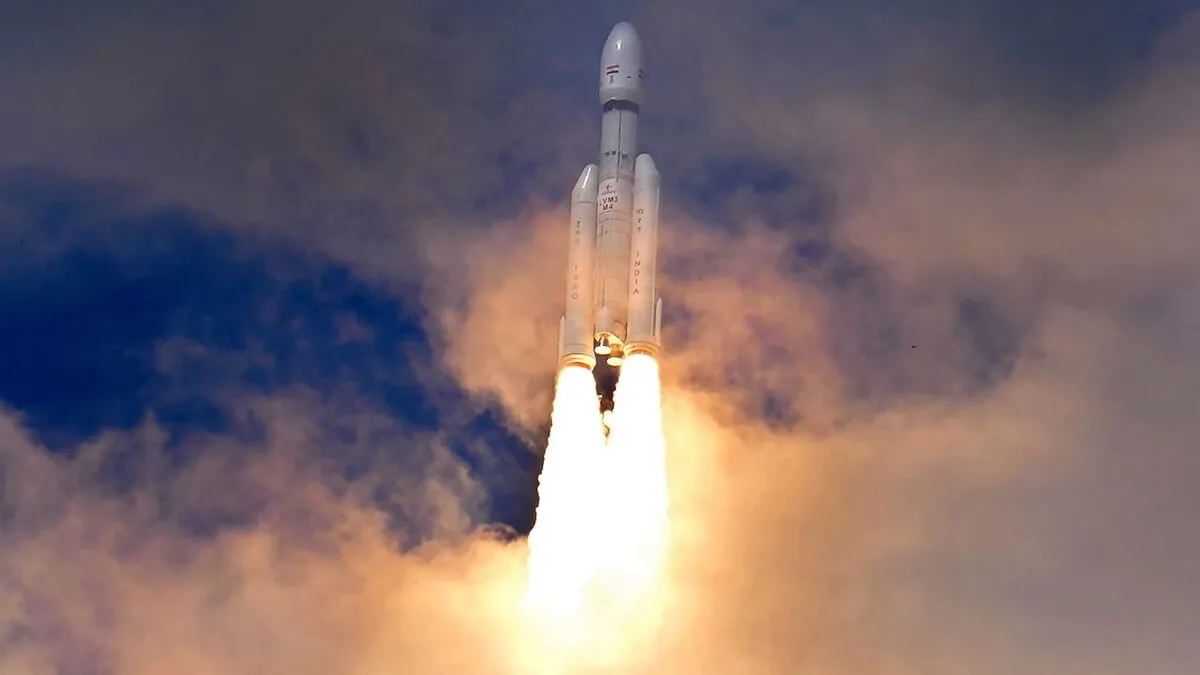
Introduction
In recent years, space exploration has become a topic of great interest and importance. One of the most notable space missions is Chandrayaan, India’s lunar exploration program. Following the success of Chandrayaan 2, the Indian Space Research Organisation (ISRO) has announced its plans for Chandrayaan 3. This article will delve into the cosmic connection that Chandrayaan 3 offers in the realm of UPSC’s current affairs.
Table of Contents
1. Overview of Chandrayaan 3
Chandrayaan 3 is the third mission in India’s ambitious lunar exploration program. Building upon the successes and learnings from Chandrayaan 2, this mission aims to further advance India’s scientific prowess and expand our understanding of the Moon.
2. Objectives of Chandrayaan 3
The primary objective of Chandrayaan 3 is to conduct a soft landing on the lunar surface and deploy a rover to explore the uncharted territories. This mission will gather vital data about the Moon’s geology, mineralogy, and lunar exosphere, providing valuable insights into the evolution of our celestial neighbor.
3. Significance of Lunar Exploration
Lunar exploration holds immense significance in the field of space research. By studying the Moon, scientists can unlock crucial information about the origins of the solar system, the presence of water and resources, and potential human colonization possibilities. Furthermore, the Moon serves as a stepping stone for deep space exploration, acting as a testing ground for technologies and systems.
4. India’s Contribution to Space Research
India has made remarkable contributions to space research, and the Chandrayaan program is a testament to its commitment to scientific advancement. With Chandrayaan III, India aims to strengthen its position as a key player in the global space community, showcasing its technological prowess and fostering international collaborations.
5. Key Components of Chandrayaan 3
Chandrayaan 3 consists of several key components, including a lunar lander, a rover, and an orbiter. The lander will enable a soft landing on the lunar surface, while the rover will traverse the terrain, collecting samples and conducting experiments. The orbiter will facilitate communication between Earth and the lunar mission, relaying crucial data and imagery.
6. Technical Challenges and Solutions
Undertaking a lunar mission comes with its share of technical challenges. Chandrayaan III must overcome obstacles such as the harsh lunar environment, precision landing, and communication complexities. However, ISRO has a proven track record and is diligently working on innovative solutions to ensure the success of the mission.
7. International Collaborations
Space exploration is a collaborative effort, and Chandrayaan 3 is no exception. ISRO actively collaborates with international partners, including NASA and other space agencies, to share expertise, resources, and data. These collaborations foster scientific cooperation and contribute to humanity’s collective understanding of the cosmos.
8. Chandrayaan 3 and UPSC’s Current Affairs
Chandrayaan 3 holds significant relevance in the realm of UPSC’s current affairs. The mission showcases India’s scientific achievements, which can be an important topic for competitive examinations such as the UPSC. Aspirants should stay updated on the progress and outcomes of Chandrayaan 3 to effectively answer questions related to space exploration and India’s contributions to science.
9. Impact on Scientific Advancements
The data gathered from Chandrayaan 3 will have a profound impact on scientific advancements. It will provide new insights into lunar geology, enhance our understanding of the Moon’s formation, and aid in future space missions. The research conducted during this mission will contribute to various scientific disciplines, including astrophysics, geology, and planetary science.
10. Future Prospects of Chandrayaan Program
The Chandrayaan program represents India’s long-term commitment to space exploration. Beyond Chandrayaan 3, there are plans for subsequent missions, including manned lunar missions and deep space exploration. These ambitious endeavors demonstrate India’s vision for scientific progress and its aspiration to reach new frontiers in space.
Conclusion
Chandrayaan 3 is a significant milestone in India’s space exploration journey. Through this mission, India aims to expand its scientific knowledge, foster international collaborations, and inspire future generations of scientists. The success of Chandrayaan 3 will not only propel India’s space program but also contribute to humanity’s collective understanding of the universe.
FAQs
- Q: How does Chandrayaan III differ from Chandrayaan 2? A: Chandrayaan 3 builds upon the successes and learnings of Chandrayaan 2, with improved technical capabilities and a focus on a successful soft landing and rover deployment.
- Q: What are the key scientific objectives of Chandrayaan III? A: The primary objectives of Chandrayaan III are to study lunar geology, mineralogy, and the lunar exosphere, as well as to gather data for future space missions.
- Q: Will Chandrayaan III contribute to future manned lunar missions? A: Yes, Chandrayaan III‘s findings and technological advancements will provide valuable insights for planning future manned lunar missions.
- Q: How is India collaborating with other countries in the Chandrayaan program? A: India actively collaborates with international partners, including NASA and other space agencies, to share knowledge, resources, and data for mutual scientific advancements.
- Q: What is the significance of Chandrayaan III in the context of UPSC’s current affairs? A: Chandrayaan III represents an important topic for UPSC aspirants, showcasing India’s scientific achievements and contributions to space exploration.
GET MORE INFO-Crack The UPSC Exam 2024: Insider Insights











